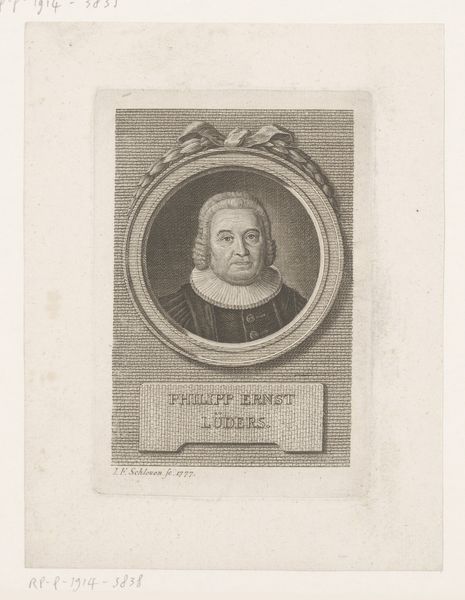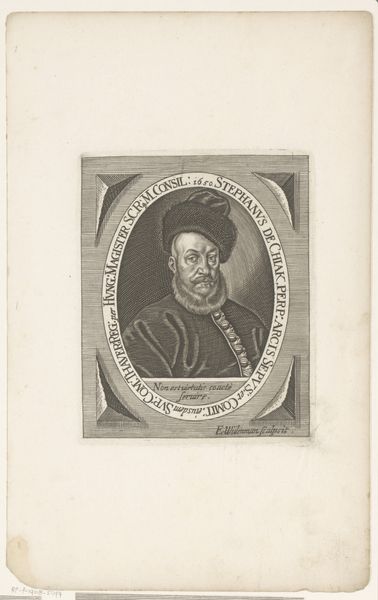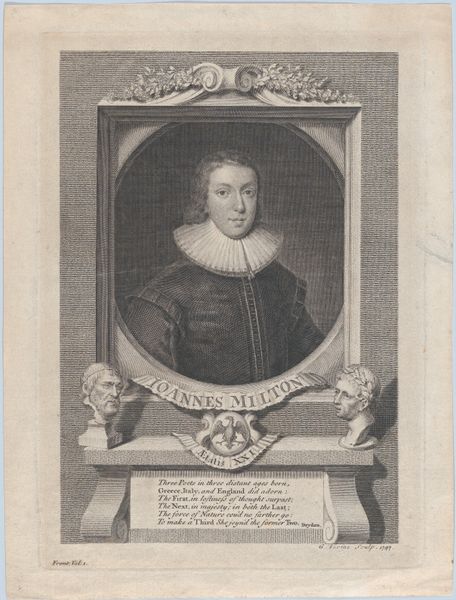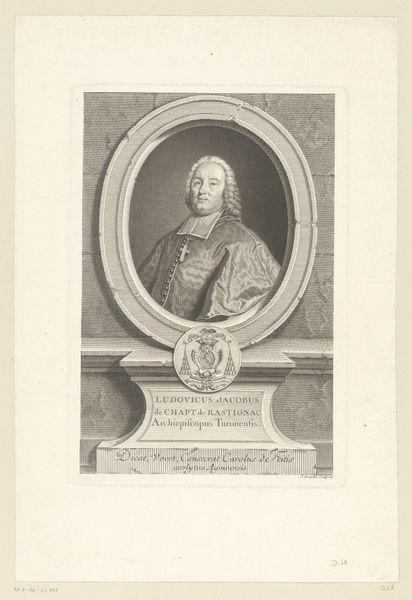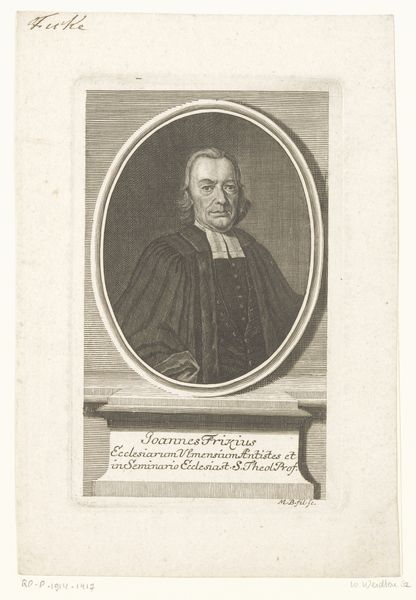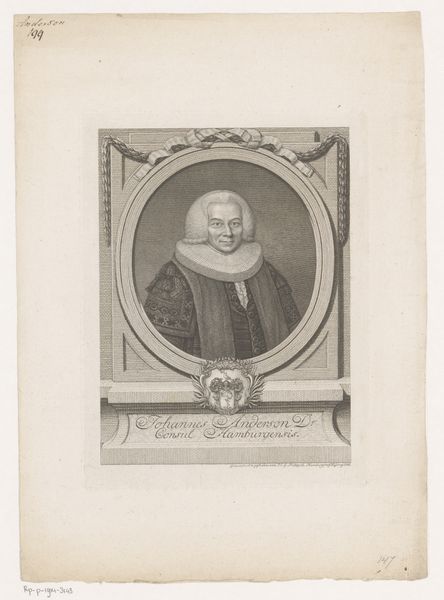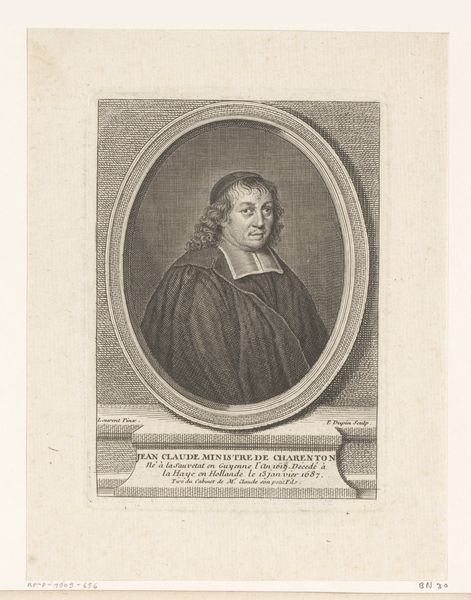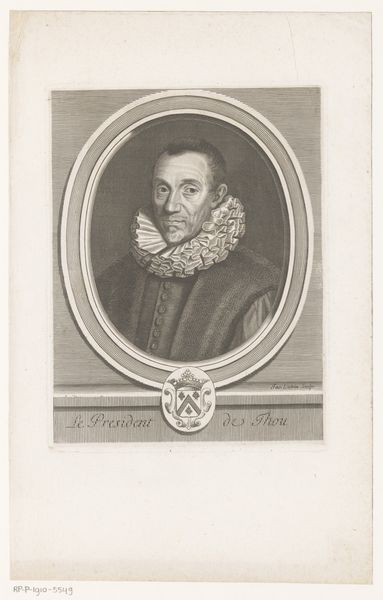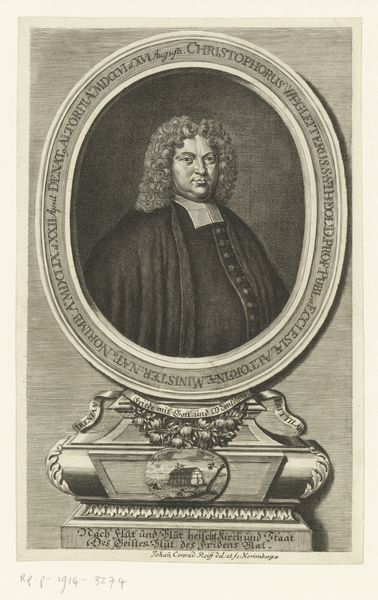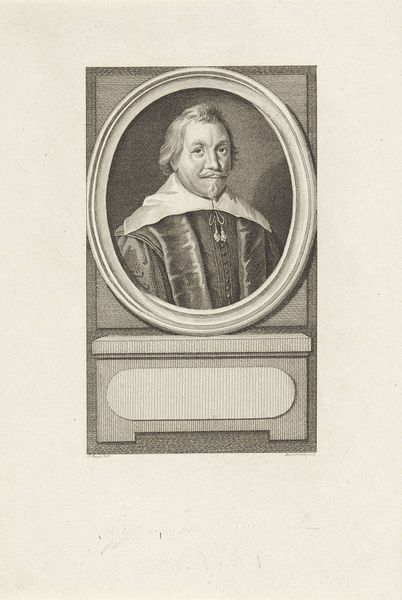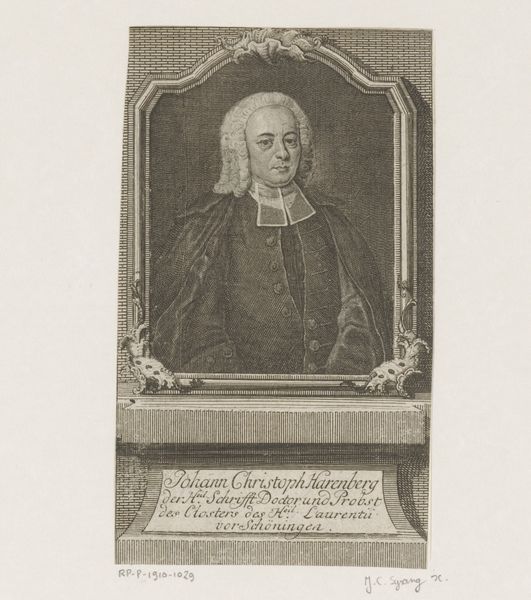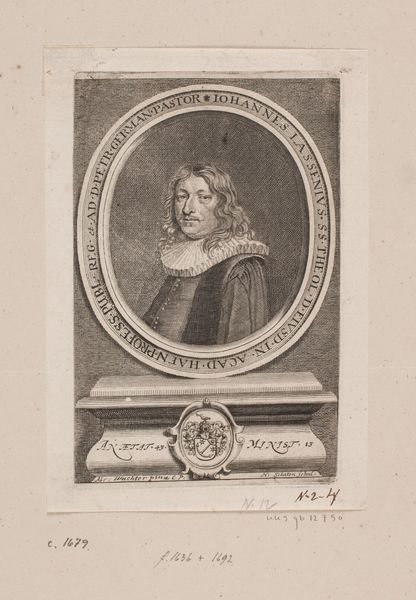
Dimensions: height 133 mm, width 90 mm
Copyright: Rijks Museum: Open Domain
Heinrich Pfenninger created this portrait of Joachim de Watt using etching, a printmaking technique that relies on acid to bite into a metal plate, allowing for incredibly fine lines and detailed shading. The process begins with coating a metal plate, often copper or zinc, with a waxy, acid-resistant substance. The artist then draws through this coating, exposing the metal underneath. When the plate is submerged in acid, the exposed lines are etched, creating grooves. The longer the plate remains in the acid, the deeper the lines become, which will hold more ink, resulting in darker tones in the final print. This meticulous process is labor intensive, demanding both technical skill and artistic vision. Prints like this one were often made in multiples, allowing for wider circulation of images and ideas. Considering the social context, etching allowed for a democratization of art, making portraits and other images accessible to a broader audience, reflecting new forms of labor and consumption. By appreciating the materials and the making process, we understand how this portrait bridges art, craft, and the social fabric of its time.
Comments
No comments
Be the first to comment and join the conversation on the ultimate creative platform.
